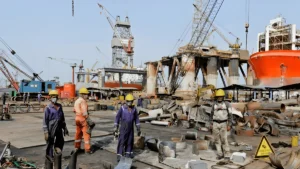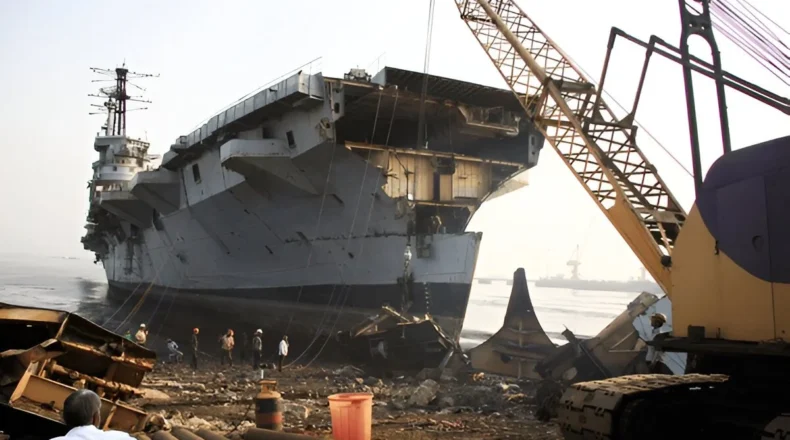What technologies improve ship recycling safety and how Ship Recycling Services in India are making global shipping more sustainable.
The maritime industry plays a crucial role in global trade, but ships are not built to last forever. When vessels reach the end of their operational life, they are dismantled and recycled. This practice is essential for recovering valuable materials like steel, copper, and aluminum while reducing environmental risks. However, one of the major challenges in the process has always been safety—both for the workforce and for the environment.
This is where the question becomes highly relevant: What technologies improve ship recycling safety? The answer lies in modern innovations, digitalization, and sustainable engineering practices.
India has emerged as a global leader in this field. Ship Recycling Services in India are increasingly adopting advanced tools and international guidelines to make the process cleaner, safer, and more efficient.
Why Safety in Ship Recycling Matters
Ship recycling is not just dismantling steel—it involves hazardous substances, heavy equipment, and exposure to toxic materials. Without safety protocols and modern technologies, risks can include:
-
Worker accidents due to heavy machinery
-
Exposure to asbestos, oil residues, and harmful chemicals
-
Fire hazards during dismantling
-
Environmental contamination from waste discharge
The adoption of technology ensures that recycling becomes a structured, risk-mitigated process rather than an unsafe, labor-intensive operation.

What Technologies Improve Ship Recycling Safety
1. Digital Mapping and 3D Scanning
Modern recycling begins with detailed vessel assessment. Digital mapping technologies and 3D scanners identify hazardous areas in the ship’s structure before dismantling starts. This allows workers to:
-
Pinpoint risky sections of the vessel
-
Plan dismantling sequences efficiently
-
Reduce unexpected exposure to toxins
2. Robotics and Remote Handling Tools
Robots and remote tools are being introduced to manage the riskiest jobs, such as cutting steel plates or handling asbestos. Their benefits include:
-
Reducing direct human exposure
-
Improving precision in dismantling
-
Enhancing fire and explosion prevention
3. Advanced Waste Management Systems
Safe ship recycling is not only about dismantling—it’s also about handling what comes out of it. Modern waste management systems are used for:
-
Segregating hazardous and non-hazardous waste
-
Treating oil sludge and chemical residues
-
Recycling scrap metals sustainably
4. Artificial Intelligence (AI) Monitoring
AI-powered monitoring tools track dismantling activities in real time. They can detect irregularities like overheating, unsafe gas levels, or structural instability. Alerts ensure quick preventive action.
5. Green Ship Recycling Yards
Ship Recycling Services in India are increasingly building yards that comply with the Hong Kong International Convention for the Safe and Environmentally Sound Recycling of Ships. These green yards incorporate:
-
Impermeable floors to prevent soil contamination
-
Drainage systems for chemical leaks
-
Real-time monitoring of worker safety
6. IoT-Enabled Wearables
Workers are equipped with smart helmets and wearable devices. These tools:
-
Track oxygen levels and toxic gases
-
Monitor worker fatigue
-
Send emergency alerts
7. Plasma and Laser Cutting Tools
Traditional gas-based cutting often results in fire hazards. Plasma and laser cutters reduce risks by offering:
-
More precise cutting
-
Lower temperature sparks
-
Faster dismantling with less waste
How Ship Recycling Services in India Are Transforming Safety
India, especially regions like Alang, has been one of the world’s largest ship recycling hubs. Over the years, the industry has shifted from manual dismantling methods to technology-driven, safety-focused practices.
Some transformations include:
-
Certification standards: Yards upgrading to meet ISO and IMO standards.
-
Digital audits: Using technology for compliance tracking.
-
Training programs: Workers trained with VR-based simulations before handling actual dismantling.
-
Collaborations: Partnerships with global sustainability organizations.
These measures ensure India remains competitive while safeguarding workers and the environment.
Benefits of Safer Ship Recycling
-
Worker Protection: Reduced accidents and long-term health risks.
-
Environmental Safety: Controlled management of hazardous waste.
-
Higher Efficiency: Precision technology cuts time and costs.
-
Global Recognition: Compliance with international conventions boosts credibility.
FAQs
Q1. Why is ship recycling safety such a concern?
Because the process involves dangerous substances, sharp dismantling tools, and high-risk working conditions. Without safety measures, accidents and environmental damage are common.
Q2. What technologies improve ship recycling safety the most?
Key technologies include robotics, AI monitoring, wearable sensors, and green yard infrastructure. Together, they significantly reduce human exposure to risk.
Q3. Are Ship Recycling Services in India adopting these technologies?
Yes. India is moving rapidly toward safer and more sustainable ship recycling by implementing advanced monitoring systems, digital mapping, and international compliance.
Q4. What is the role of international conventions?
Conventions like the Hong Kong Convention set global safety standards that ship recycling yards must follow to protect workers and the environment.
Q5. How does safe ship recycling benefit the environment?
It ensures toxic substances are handled responsibly, prevents ocean and soil pollution, and promotes sustainable reuse of valuable materials.
Moving Beyond Dismantling Toward Responsible Innovation
Ship recycling is no longer about simply breaking vessels apart—it’s about integrating innovation with responsibility. Technologies like robotics, IoT, and AI are transforming safety standards, while Ship Recycling Services in India are setting an example for the rest of the world.
As global demand for greener shipping grows, companies such as Greenship Services are proving that recycling ships safely can contribute to sustainability, worker welfare, and environmental preservation.
In the end, improving ship recycling safety isn’t just a technological upgrade—it’s a commitment to the future.

